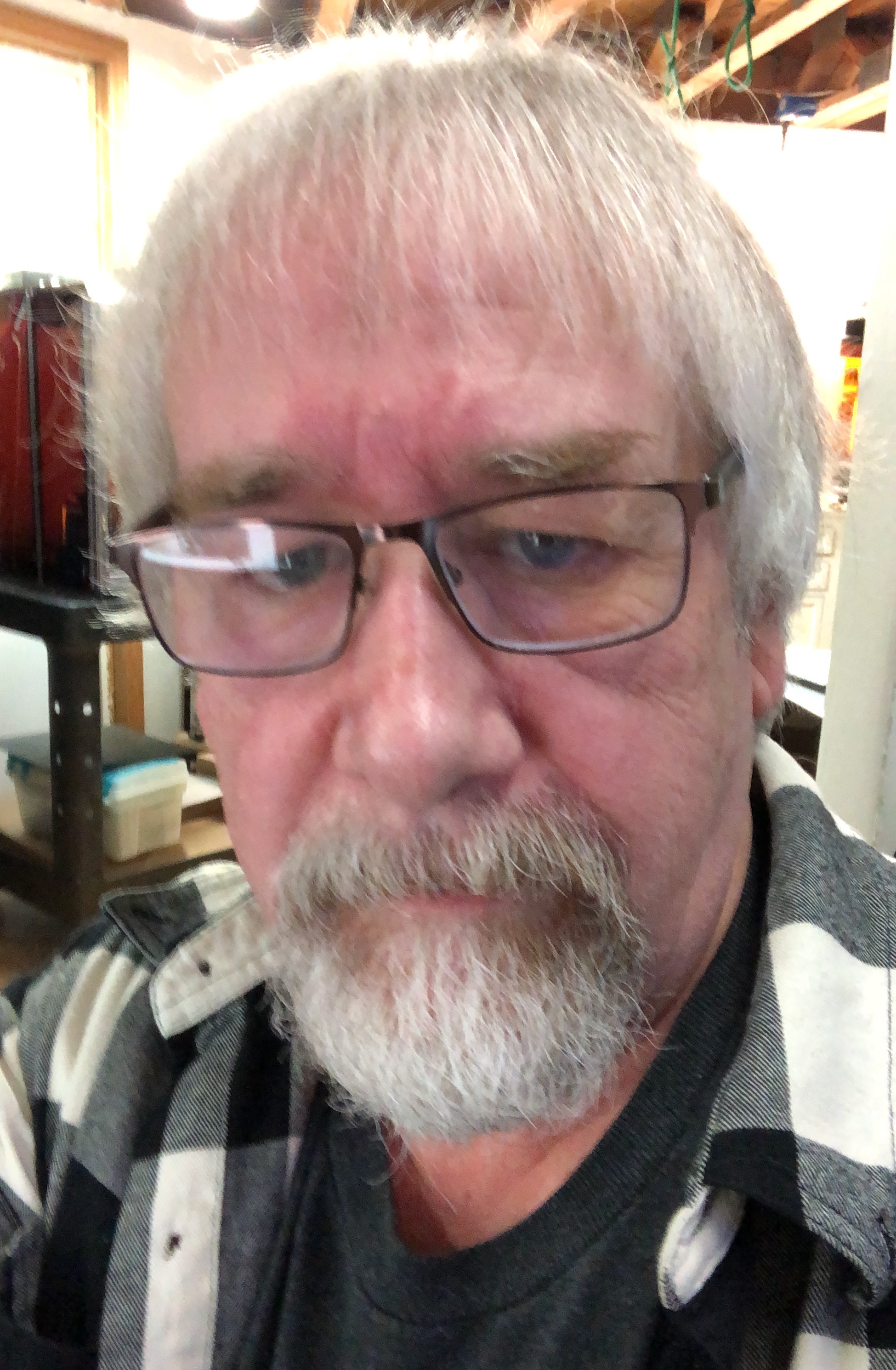

This site, which was first uploaded to the internet in 1996, is where I've been documenting my Kodak career and my artistic inclinations, dating as far back as 1984. The purchase of a Mac 128K computer that year, introduced me to a whole new world of creative possibilities. Animation, graphics, visualization, music, programming and much more. A year later, with the addition of an early single element scanner, I began scanning and editing my photos in MacPaint. It dawned on me then, the tremendous potential that digitization offered for the future of photography. Color editing was still a few years away, but I saw other benefits that included non-degrading copies, electronic transmission of images, illustrated publications and much more. Better still, I found myself in a unique position to attempt to steer my employer, the photo giant, Eastman Kodak Company, away from ananlog video photos on TV's, towards digital photos on computers. In 1986, as a result of the loss in the Polaroid suit, my project was cancelled. The project was a still video printer which used Kodak's Instant Film. The Consumer Electronics Division (think 8mm camcorders & videotape), to which I was assigned, was renamed the Electronic Photography Division shortly afterwards. The EPD product line at that time included a number of new electronic products based on the analog Still Video Floppy (and ancient televsion standards). My own experiences with scanning photos at home indicated this was not the path we should have been following. The sight of a peronal computer in those days was rare at Kodak, however, the PC market was just beginning to explode. A number of small Silicon Valley companies had begun introducing consumer digitizing devices. Kodak would ignore this "too small" niche industry for several more years. My illustration skills on the Mac would get me noticed. Using my Mac and MacPaint to solve several of my first tasks, (including a wiring diagram for the entire Image Simulation Lab), led to a Mac on my desk at Kodak in very short order. This was quite unusual for the time, especially since I was only a technician. Fortunately, my supervisor realized that visual communications were vitally important when attempting to convey the many foreign new concepts, (in both video and digital) to Kodak's sliver halide people in sales, marketing and management. My role soon became the "conceptual artist" and sole scribe for the division, creating illustrations, system diagrams, timelines, protocol and requirement documents. Then, I began to use the tools to make my case for a move towards digital. Conjuring up numerous illustrated proposals of digital products and solutions of my own design, few, if any were adopted. HOWEVER, I think they did generate discusssion and that was my primary goal. My unique artistic & personal computer perspective, led to being afforded my own small lab as well as a budget to purchase OEM digital imaging products and software. My goal was to analyze their functionality, explore their utility and report back on them. What a dream job! For the rest of my twenty-seven year career, I was afforded similar opportunities in nearly every position I took on. Working at Kodak was like having a wealthy art patron, and I used the opportunity to also pursue my own digital art in my off-hours. My Illustrated Digital Imaging History is a personal timeline that runs from my purchase of a Mac in 1984, to Kodak's release of a mature line of professional digital imaging products in 1992. Contained within are my recollections of the many products I tested, explored and even a few I designed. As I previously mentioned, I was the unofficial scribe of EPD, I composed many of the original protocol and requirements documents, with engineering input, and I archived most of them to CDROM in 1992. You won't find many digital photography/computer histories like this one. From a first person perspective, with digital evidence, I attempt to provide some insights into the genesis of digital photography at Kodak, and the birth of the computer industry as well. The story is complete with photos, original documents and even original product brochures. From 1986-1990, I shared a partition wall with the inventor of the digital camera, although I wouldn't discover that fact until a few years later. We had numerous discussions on the future of photography over that partition wall. I hope you'll check out this unique glimpse into those early years of digital photography.Towards the end of my career at Kodak, (I decided to leave in 2001), I had the opportunity to learn the intricacies of 3D lenticular imaging. This is a method of displaying 3D and motion sequences on a 2D print, utilizing a special lens laminate that provides a glasses free, 3D viewing experience. As an internal consultant to Dynamic Imaging, (Kodak's short lived lenticular printing group), I introduced digital photographic 3D capture and 3D software modeling as alternative methods of creating 3D visuals for lenticular. Using 3D modeling/rendering tools, I helped create 3D lenticular images for clients like, Pepsi, RJReynolds, Purina, Martell Liquor and Disney. You can view some of those works on my "commissioned art " site 3D Wizardry Lenticular Design Works.
These days I'm pursuing my art, doing occassoinal commercial jobs and enjoying my new studio. Be sure you visit my online art galleries, my 3D Lenticular Gallery and my Fine Art America Gallery & Print Shop where you will find a wide selection of my artwork including my landscape/nature photography, early digital work, and 2D versions of most of my 3D lenticular works, all available for purchase as art prints on paper, canvas, acrylic, metal or as note cards.
|
about this site |